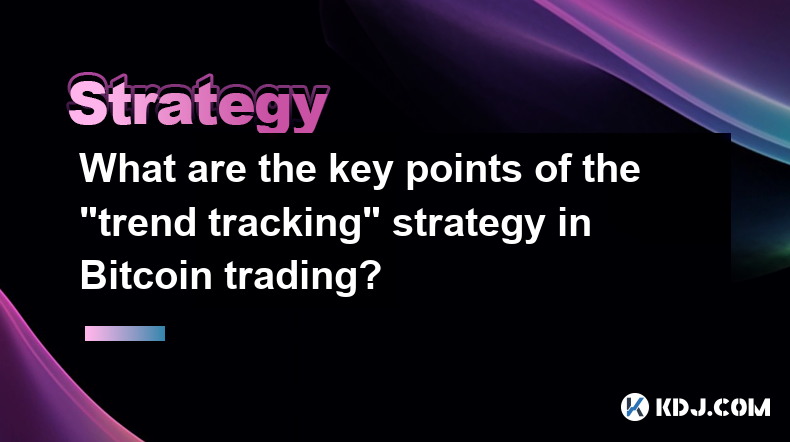-
 Bitcoin
Bitcoin $87,138.6549
3.45% -
 Ethereum
Ethereum $1,630.6301
3.37% -
 Tether USDt
Tether USDt $0.9999
0.02% -
 XRP
XRP $2.1240
3.87% -
 BNB
BNB $602.7013
2.07% -
 Solana
Solana $139.6766
1.06% -
 USDC
USDC $0.9999
0.02% -
 Dogecoin
Dogecoin $0.1617
5.47% -
 TRON
TRON $0.2432
-0.25% -
 Cardano
Cardano $0.6428
4.75% -
 Chainlink
Chainlink $13.4950
4.04% -
 UNUS SED LEO
UNUS SED LEO $9.4545
1.03% -
 Avalanche
Avalanche $20.5863
6.23% -
 Stellar
Stellar $0.2598
7.69% -
 Toncoin
Toncoin $3.0197
1.67% -
 Shiba Inu
Shiba Inu $0.0...01264
3.99% -
 Sui
Sui $2.2650
7.98% -
 Hedera
Hedera $0.1713
5.99% -
 Bitcoin Cash
Bitcoin Cash $340.6319
2.17% -
 Polkadot
Polkadot $3.9095
1.97% -
 Litecoin
Litecoin $80.7078
6.42% -
 Hyperliquid
Hyperliquid $17.8959
2.22% -
 Bitget Token
Bitget Token $4.4759
1.24% -
 Dai
Dai $1.0000
0.00% -
 Ethena USDe
Ethena USDe $0.9992
0.01% -
 Pi
Pi $0.6342
1.85% -
 Monero
Monero $216.1510
1.12% -
 Uniswap
Uniswap $5.4363
4.91% -
 Pepe
Pepe $0.0...07862
7.63% -
 Aptos
Aptos $5.1607
5.19%
What are the key points of the "trend tracking" strategy in Bitcoin trading?
By identifying market trends and trading accordingly, the "Trend Tracking" strategy aims to capitalize on significant price movements in the Bitcoin market, potentially generating substantial returns while managing risk through predefined stop-loss and take-profit orders.
Feb 28, 2025 at 04:00 pm

Key Points of the "Trend Tracking" Strategy in Bitcoin Trading
Identify the Trend:
- Analyze candlestick charts and technical indicators (e.g., moving averages, MACD) to determine the general direction of the market.
- Look for higher highs and higher lows for an uptrend, or lower highs and lower lows for a downtrend.
Enter the Trade:
- Buy or sell Bitcoin (BTC) according to the identified trend.
- Set a stop-loss order below the entry price in an uptrend, or above the entry price in a downtrend, to limit potential losses.
Ride the Trend:
- Hold the position for an extended period, as long as the trend remains in place.
- Adjust the take-profit order as the trend progresses, aiming to capitalize on significant market movements.
Exit the Trade:
- Exit the position when the trend reverses or reaches a predefined profit target.
- Monitor price action and technical indicators to identify potential trend changes.
- Close the trade promptly to avoid reversing gains or incurring losses.
Risk Management:
- Determine an appropriate risk-to-reward ratio for each trade.
- Manage the position size based on available capital and risk tolerance.
- Avoid emotional trading and stick to the predefined trading plan.
Technical Analysis Tools:
- Utilize technical indicators such as moving averages (MA), Bollinger Bands (BB), and Relative Strength Index (RSI) to assess trends and market conditions.
- Study candlestick chart patterns to identify potential reversal or continuation signals.
Backtesting and Optimization:
- Test the strategy on historical data to evaluate its performance and identify areas for improvement.
- Adjust the parameters and rules of the strategy to enhance its accuracy and efficiency under various market conditions.
FAQs
Q: What are the benefits of trend tracking?
A: Trend tracking allows traders to ride market momentum and potentially profit from large price movements. It provides a systematic and objective approach to trading, reducing reliance on emotional decision-making.
Q: Are there any drawbacks to trend tracking?
A: Trend tracking can lead to large losses if the market suddenly reverses or consolidates. It also requires traders to have patience and discipline to stay in trades for extended periods.
Q: What is the best timeframe to use for trend trading?
A: The optimal timeframe for trend trading varies depending on the trader's risk tolerance and available capital. Common timeframes include daily, 4-hour, or hourly charts.
Q: Can trend tracking be automated?
A: Yes, certain trading bots or automated trading systems can be customized to execute trend tracking strategies. However, traders should carefully review the parameters and settings to minimize risk.
Q: What are the key elements of a successful trend tracking strategy?
A: A successful trend tracking strategy involves identifying the trend accurately, entering and exiting trades at optimal timings, managing risk effectively, and continuously evaluating and refining the approach based on market conditions.
Disclaimer:info@kdj.com
The information provided is not trading advice. kdj.com does not assume any responsibility for any investments made based on the information provided in this article. Cryptocurrencies are highly volatile and it is highly recommended that you invest with caution after thorough research!
If you believe that the content used on this website infringes your copyright, please contact us immediately (info@kdj.com) and we will delete it promptly.
- Decentraland (MANA) Price Soars 10% to Two-Month High of $0.31, Bullish Trend May Extend Rally
- 2025-04-21 19:00:13
- AI Activity Data from Phoenix Group Indicates Strong Engagement for Injective ($INJ), Fetch.ai ($FET), and $ARC
- 2025-04-21 19:00:13
- Solana (SOL) Price Prediction: Will the Whale Buy the Dip and Spark a New Bull Market?
- 2025-04-21 18:55:14
- JUP, the native token of Jupiter exchange, is on the move
- 2025-04-21 18:55:14
- BingX Lists EPT, the Native Token for Balance.fun, on Its Spot Market and Xpool
- 2025-04-21 18:50:13
- Ethereum Gas Fee Drops to Record Lows, Average Transaction Now Costs Only $0.01
- 2025-04-21 18:50:13
Related knowledge

What to do if SHIB's HODL wave indicator shows loose chips?
Apr 21,2025 at 03:07pm
If the SHIB's HODL wave indicator shows loose chips, it suggests that a significant portion of the SHIB holders are selling their tokens, potentially leading to increased volatility and a possible price drop. Understanding how to navigate this situation is crucial for any SHIB investor. This article will guide you through the steps to take when you noti...

Is it a risk that SHIB's derivatives position is 3 times that of the spot?
Apr 20,2025 at 12:35am
Is it a risk that SHIB's derivatives position is 3 times that of the spot? The cryptocurrency market is known for its volatility and high-risk nature, and Shiba Inu (SHIB) is no exception. One of the metrics that traders and investors closely monitor is the ratio of derivatives to spot positions. SHIB's derivatives position being three times that of the...

What does SHIB's Cardano coefficient below 0.3 indicate?
Apr 19,2025 at 08:00am
What does SHIB's Cardano coefficient below 0.3 indicate? The Cardano coefficient, often used within the cryptocurrency community, is a metric that helps investors and analysts understand the correlation between different cryptocurrencies. When it comes to SHIB (Shiba Inu) and its Cardano coefficient falling below 0.3, this indicates a relatively low cor...

Is SHIB's TVL suddenly increasing by 20% a positive signal?
Apr 20,2025 at 08:07am
The sudden increase of SHIB's TVL (Total Value Locked) by 20% has sparked a lot of interest and speculation within the cryptocurrency community. TVL is an important metric that represents the total amount of assets locked in a DeFi protocol, indicating the level of user engagement and trust in the platform. In this article, we will explore whether this ...

What does SHIB's exchange inventory ratio hit a new low mean?
Apr 21,2025 at 02:50am
The term 'exchange inventory ratio' refers to the percentage of a cryptocurrency's total supply that is held on exchanges. When we say that SHIB's exchange inventory ratio hit a new low, it means that the proportion of Shiba Inu (SHIB) tokens held on cryptocurrency exchanges has reached its lowest point in a given period. This metric is significant beca...

Should SHIB's MVRV ratio break through 5 and stop profit in batches?
Apr 20,2025 at 11:35pm
The MVRV (Market Value to Realized Value) ratio is a key metric used in the cryptocurrency market to assess whether a particular asset is overvalued or undervalued. For Shiba Inu (SHIB), a popular meme coin, understanding the implications of its MVRV ratio breaking through the 5 threshold is crucial for investors looking to manage their portfolios effec...

What to do if SHIB's HODL wave indicator shows loose chips?
Apr 21,2025 at 03:07pm
If the SHIB's HODL wave indicator shows loose chips, it suggests that a significant portion of the SHIB holders are selling their tokens, potentially leading to increased volatility and a possible price drop. Understanding how to navigate this situation is crucial for any SHIB investor. This article will guide you through the steps to take when you noti...

Is it a risk that SHIB's derivatives position is 3 times that of the spot?
Apr 20,2025 at 12:35am
Is it a risk that SHIB's derivatives position is 3 times that of the spot? The cryptocurrency market is known for its volatility and high-risk nature, and Shiba Inu (SHIB) is no exception. One of the metrics that traders and investors closely monitor is the ratio of derivatives to spot positions. SHIB's derivatives position being three times that of the...

What does SHIB's Cardano coefficient below 0.3 indicate?
Apr 19,2025 at 08:00am
What does SHIB's Cardano coefficient below 0.3 indicate? The Cardano coefficient, often used within the cryptocurrency community, is a metric that helps investors and analysts understand the correlation between different cryptocurrencies. When it comes to SHIB (Shiba Inu) and its Cardano coefficient falling below 0.3, this indicates a relatively low cor...

Is SHIB's TVL suddenly increasing by 20% a positive signal?
Apr 20,2025 at 08:07am
The sudden increase of SHIB's TVL (Total Value Locked) by 20% has sparked a lot of interest and speculation within the cryptocurrency community. TVL is an important metric that represents the total amount of assets locked in a DeFi protocol, indicating the level of user engagement and trust in the platform. In this article, we will explore whether this ...

What does SHIB's exchange inventory ratio hit a new low mean?
Apr 21,2025 at 02:50am
The term 'exchange inventory ratio' refers to the percentage of a cryptocurrency's total supply that is held on exchanges. When we say that SHIB's exchange inventory ratio hit a new low, it means that the proportion of Shiba Inu (SHIB) tokens held on cryptocurrency exchanges has reached its lowest point in a given period. This metric is significant beca...

Should SHIB's MVRV ratio break through 5 and stop profit in batches?
Apr 20,2025 at 11:35pm
The MVRV (Market Value to Realized Value) ratio is a key metric used in the cryptocurrency market to assess whether a particular asset is overvalued or undervalued. For Shiba Inu (SHIB), a popular meme coin, understanding the implications of its MVRV ratio breaking through the 5 threshold is crucial for investors looking to manage their portfolios effec...
See all articles






















































































